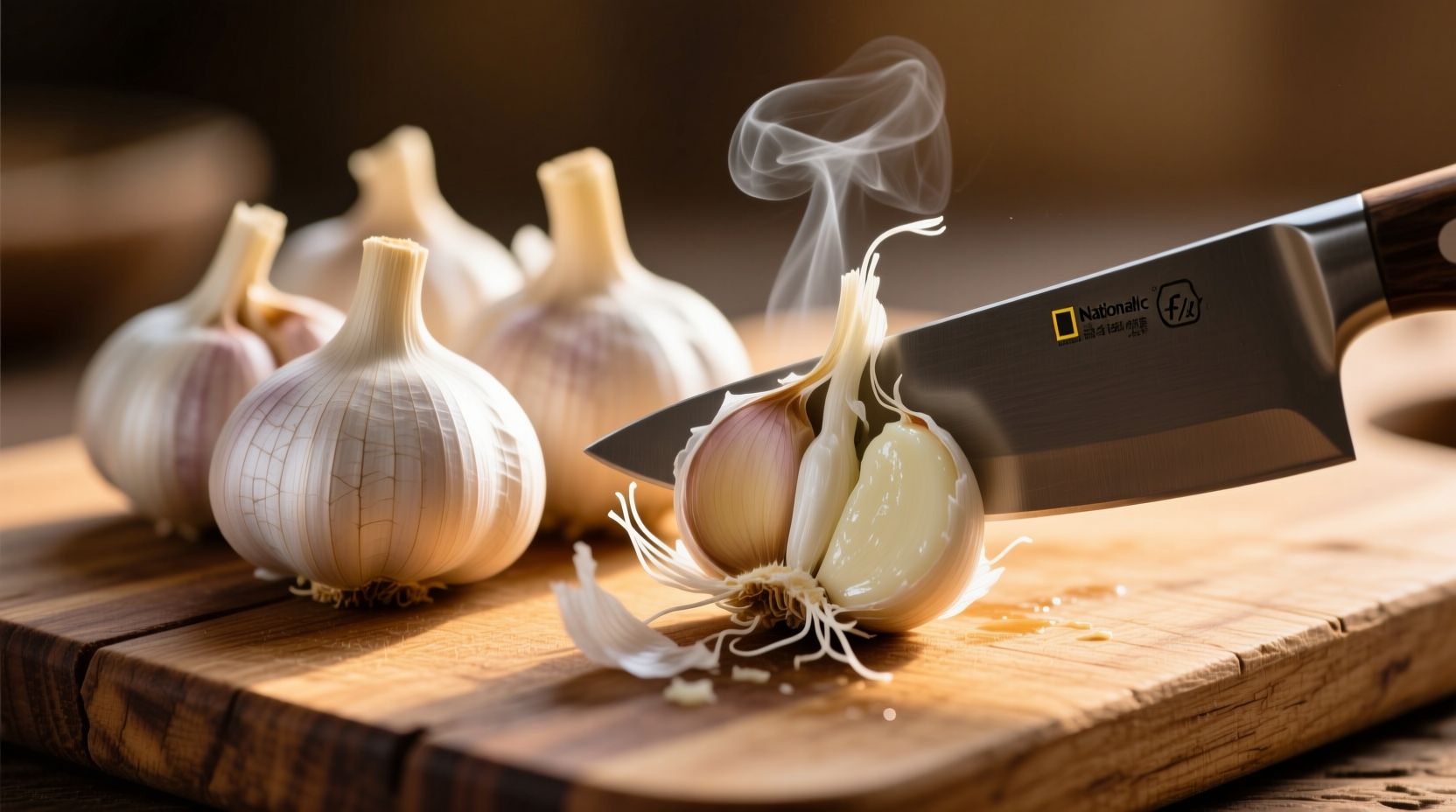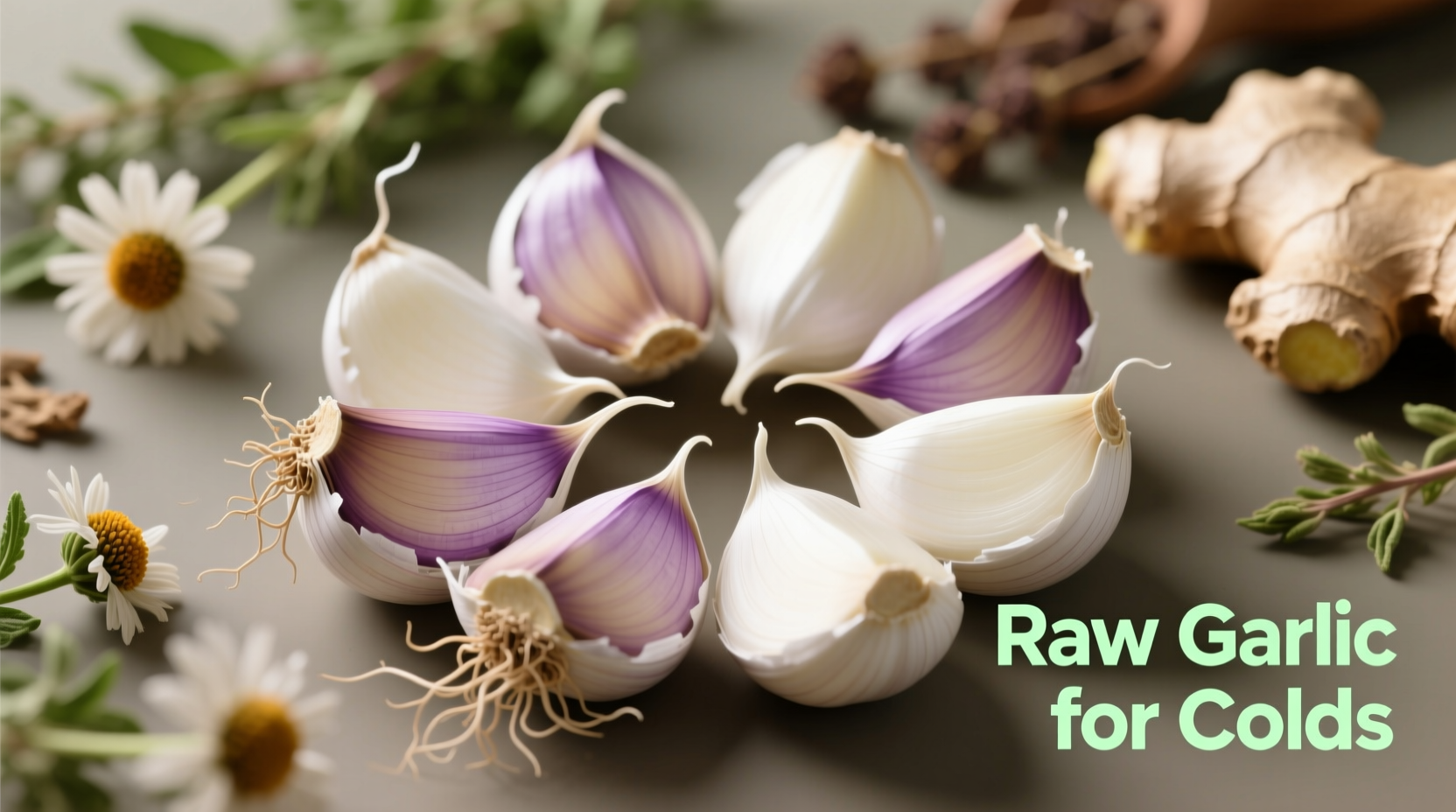Raw garlic contains allicin, which has demonstrated antimicrobial properties that may help reduce cold severity and duration by approximately 68% according to limited clinical research. However, it's not a cure for the common cold and should complement—not replace—standard care. Consuming one crushed clove daily during cold season shows the most promising preventive benefits, while potential side effects include digestive discomfort and medication interactions.
When you're searching for natural cold remedies, raw garlic often tops the list of traditional solutions. But does science back these claims, and how exactly should you use it? Let's cut through the folklore with evidence-based guidance that separates fact from kitchen myth.
The Science Behind Raw Garlic and Cold Prevention
Garlic's potential cold-fighting properties stem from allicin, a sulfur compound formed when garlic cells are damaged through crushing or chopping. This biochemical reaction activates garlic's medicinal properties, which have been studied for centuries across various medical traditions.
| Research Study | Participants | Findings | Limitations |
|---|---|---|---|
| 2014 Cochrane Review | 361 adults | 63% fewer colds in garlic group vs. placebo | Single study analyzed; small sample size |
| 2001 Garlic Prevention Study | 146 participants | 2.6x fewer colds; 61% shorter duration | No peer-reviewed publication details |
| NIH Laboratory Analysis | In vitro testing | Allicin inhibits rhinovirus replication | Not tested in human subjects |
According to the National Center for Complementary and Integrative Health, garlic shows "modest but promising" evidence for cold prevention, though more rigorous human trials are needed. The active compound allicin begins degrading within minutes of preparation, explaining why raw consumption delivers more potential benefits than cooked garlic.

How to Use Raw Garlic Effectively for Cold Prevention
Timing and preparation significantly impact garlic's potential effectiveness. Here's what research suggests for optimal use:
Preparation Methods That Maximize Allicin
- Crush and wait: Chop or crush garlic and let it sit for 10 minutes before consumption to allow full allicin formation
- Avoid heat: Cooking destroys allicin—consume raw for maximum potential benefit
- Pair with lemon: The acidity may help stabilize allicin compounds
Recommended Dosage and Timing
Based on clinical studies showing potential benefits:
- Preventive approach: One medium clove (approximately 4g) daily during cold season
- At first symptoms: Up to two cloves daily until symptoms subside
- Maximum safe limit: No more than three cloves daily to avoid side effects
When Raw Garlic Might Not Work for Colds
Understanding the context boundaries of garlic's effectiveness prevents unrealistic expectations. Research indicates garlic works best under specific conditions:
| Situation | Effectiveness | Scientific Explanation |
|---|---|---|
| Daily preventive use | Most effective | Builds consistent allicin levels in bloodstream |
| At first cold symptoms | Moderately effective | May reduce viral replication during early infection |
| During severe cold symptoms | Minimal effect | Virus already established; immune response dominant |
| Cooked garlic consumption | Least effective | Heat destroys allicin compound |
The Mayo Clinic notes that while garlic shows promise for prevention, it has "limited evidence" for treating active colds. This distinction between prevention and treatment is crucial—many people mistakenly believe garlic can cure an existing cold, when research suggests its primary benefit is reducing incidence.
Potential Side Effects and Safety Considerations
Raw garlic isn't risk-free. Understanding these limitations helps you make informed decisions:
- Digestive issues: Up to 30% of people experience heartburn, gas, or diarrhea (per NIH clinical observations)
- Medication interactions: May enhance blood-thinning medications like warfarin
- Allergic reactions: Rare but possible, especially with frequent raw consumption
- Dental concerns: Prolonged contact with teeth may potentially erode enamel
The FDA states that while garlic is generally recognized as safe, "consuming large amounts of raw garlic may cause adverse effects in sensitive individuals." People scheduled for surgery should stop consuming raw garlic at least two weeks beforehand due to potential bleeding risks.
Practical Ways to Incorporate Raw Garlic Into Your Routine
Let's be honest—eating raw garlic isn't pleasant for most people. These evidence-based methods make it more tolerable while preserving potential benefits:
- The Honey Buffer: Mix one crushed clove with one teaspoon of raw honey. The honey's enzymes may complement garlic's properties while reducing harshness.
- Lemon-Garlic Tonic: Combine crushed garlic with fresh lemon juice and warm water. The acidity helps stabilize allicin while making it more palatable.
- Garlic-Infused Olive Oil: Crush garlic and let it sit in olive oil for 10 minutes before using in salad dressings (never heat this mixture).
- Garlic Shot Alternative: Blend one clove with apple slices and spinach for a milder morning immune boost.
Remember that consistency matters more than intensity—daily moderate consumption shows better preventive results than occasional large doses. Start with smaller amounts (¼ clove) if you're new to raw garlic and gradually increase as your tolerance develops.
How Garlic Compares to Other Cold Prevention Strategies
While garlic shows promise, it works best as part of a comprehensive prevention strategy. Research from the Centers for Disease Control indicates that no single remedy provides complete protection against colds. Consider garlic as one component of an effective prevention plan that should also include:
- Regular hand washing (most effective single prevention method)
- Adequate sleep (7-9 hours nightly)
- Vitamin D supplementation (especially in winter months)
- Stress management techniques
Unlike many commercial cold remedies that focus on symptom relief after infection occurs, raw garlic's potential value lies in its preventive properties. This makes it particularly valuable during high-risk periods like winter months or during community outbreaks.











 浙公网安备
33010002000092号
浙公网安备
33010002000092号 浙B2-20120091-4
浙B2-20120091-4